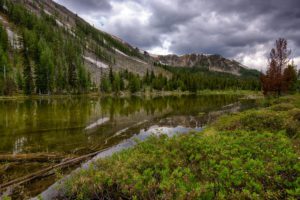Contact:
Laura Cunningham, Western Watersheds Project, (775) 513-1280; lcunningham@westernwatersheds.org
Chance Cutrano, Resource Renewal Institute, ccutrano@rri.org, 312.403.3702
Diana Oppenheim, forELK, action@forelk.org
Jeff Miller, Center for Biological Diversity, (510) 499-9185, jmiller@biologicaldiversity.org
POINT REYES NATIONAL SEASHORE, Calif. – Citing an ongoing die-off of rare Tule elk at the Tomales Point Elk Reserve on Point Reyes National Seashore, conservation and animal advocacy groups today filed a formal petition with the National Park Service to remove an eight-foot-tall fence that confines the park’s main elk herd to a narrow peninsula that lacks adequate water and forage during droughts.
“Trapping a herd of Tule elk behind a fence and confining them to a small strip of land known with inadequate water and forage is completely unnatural and ecologically irresponsible, and this die-off is the direct result of Park Service mismanagement,” said Laura Cunningham, California Director with Western Watersheds Project. “These elk deserve the freedom to roam naturally throughout Point Reyes National Seashore, like any other species of native wildlife, but instead they’re fenced off from the water and food they need for the convenience of livestock operations that lease Park Service lands. It’s a travesty.”
The Park Service adopted a Tule Elk Management Plan in 1998 that was supposed to transition the park to free-ranging herds of elk, able to re-establish natural migrations and movements in response to droughts and seasonal changes in resource abundance. Instead, park management has focused on hazing elk away from areas leased for commercial agriculture, and kept most of the National Seashore’s elk population confined on a 2,600-acre spit of land called Tomales Point, at the northern edge of the park. A number of scientific studies have pointed out that soils on Tomales Point are deficient in minerals critical elk nutrition.
“The National Park Service is deliberately neglecting the needs of wildlife at Point Reyes and, instead, has chosen to prioritize the demands of commercial beef and dairy ranchers that lease these public lands,” said Chance Cutrano, Director of Programs with Resource Renewal Institute. “As we enter yet another year of drought, dozens—if not hundreds—of additional elk will perish behind the fence at Tomales Point. This isn’t a zoo. It’s a National Park. It’s time to hold the National Park Service accountable and demand that they remove this fence.”
“The Park Service deliberately allowing a die-off of native tule elk at Point Reyes, the only national park where they occur, is reprehensible,” said Jeff Miller, a senior conservation advocate at the Center for Biological Diversity. “The priorities are completely backwards when private ranchers are allowed to take excessive water and forage for livestock during a drought while native wildlife suffers.”
Point Reyes National Seashore is currently drafting a General Management Plan – required under a 2017 settlement agreement – to determine whether and how much to emphasize cattle production on the public lands of the National Seashore., Thus far the Park Service has resisted public calls to get rid of the elk fence and allow the Tomales Point herd to roam freely in search of water and forage. Some 94 percent of public comments on the draft General Management Plan favored an alternative that increased protections for elk and phased out cattle ranching entirely, while only 2.3 percent of commentors favored extending ranching on Point Reyes.
“I’ve talked with thousands of people who all wanted to see the Tule elk thriving in Point Reyes,” said Diana Oppenheim of ForELK, a local grassroots organization that sprang up to advocate for responsible elk conservation on Point Reyes. “The Park Service loves to showcase the elk to the public since they are the number one attraction. Yet when I submitted over 700 comment letters– most were hand written–in favor of protecting the elk over ranching, the Park Service disqualified all of them from their decision making process.”
Under the Administrative Procedures Act, the National Park Service must now address the request to breach the elk fence to provide immediate elk freedom of movement, and tear down the fence entirely within 6 months. The groups petitioning the agency include Western Watersheds Project, Resource Renewal Institute, Center for Biological Diversity, Rancho Compasion, forELK, The Coexistence Initiative, Save Point Reyes National Seashore, Vital Actions, and WildCare.






